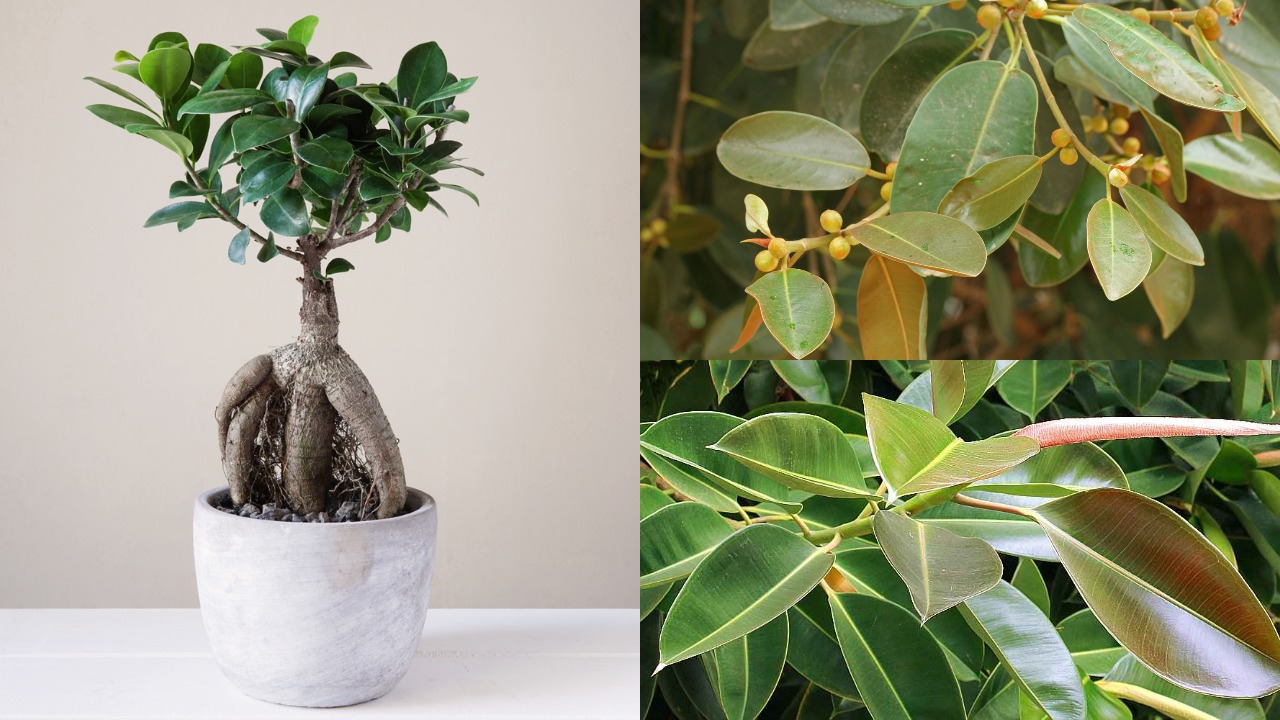
Ficus is one of the most popular indoor plants. Florists love ficus for a variety of shapes, colors, and decorativeness. If you also want to settle a ficus plant at home, first of all, decide on a suitable species. All ficus is a lovely tree with long, narrow leaves, adding an outstanding texture to spaces used as a houseplant. Let’s have a look at different types of Ficus plants for home and garden.
1. Ficus Elastica
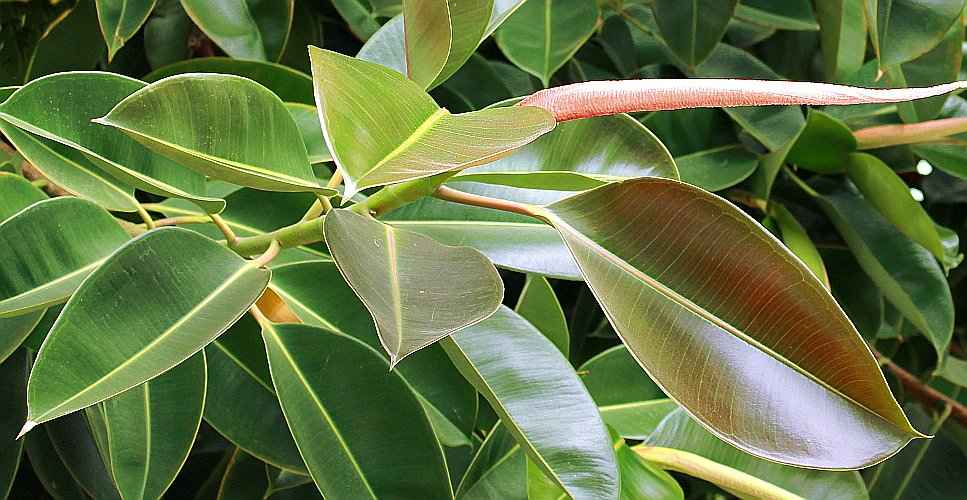
Rubbery ficus belongs to tree varieties. However, it differs from others in large leathery leaves, which are:
- Solid dark green
- Variegated (Belize, Teneque) – with a white edge or spots
- With burgundy spots (Abidjan)
- Almost black (Black Prince)
It branches badly enough, and it usually grows just up: if not cut, it can reach the apartment’s ceiling. Propagated by cuttings or leaves.
In care for Elastica is unpretentious: does not like overflow and direct sun exposure. Otherwise, plants, especially monochromatic plants, can grow in any condition.
2. Ficus Benjamina
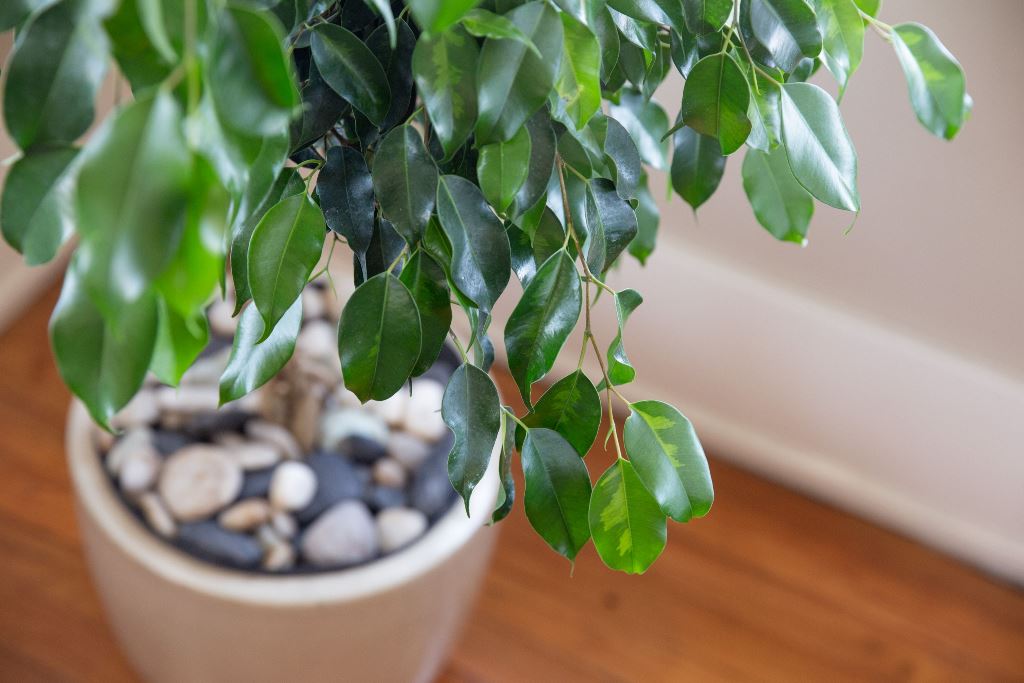
This variety cannot be called unequivocally the second or the first – rather, it shares the first place in popularity with the already described rubber-bearing brother. But visually, these two ficuses are radically different from each other: if Elastica has large leaves and an almost complete absence of branches, then Benjamina, on the contrary, stands out with small leaves (4-12 centimeters in length), excellent branching.
Often, several plants are woven together in a pigtail or lattice, achieving even greater decorativeness.
Inside view for Benjamina, many sub-varieties differ in size, shape, and leaf color. For example, “Golden Monique” has light green leaves, 5-6 cm. On the other hand, “Starlight” stands out with an almost white crown, and “Baroque” can be recognized by the curled leaves (curly crown).
3. Ficus Lyrata
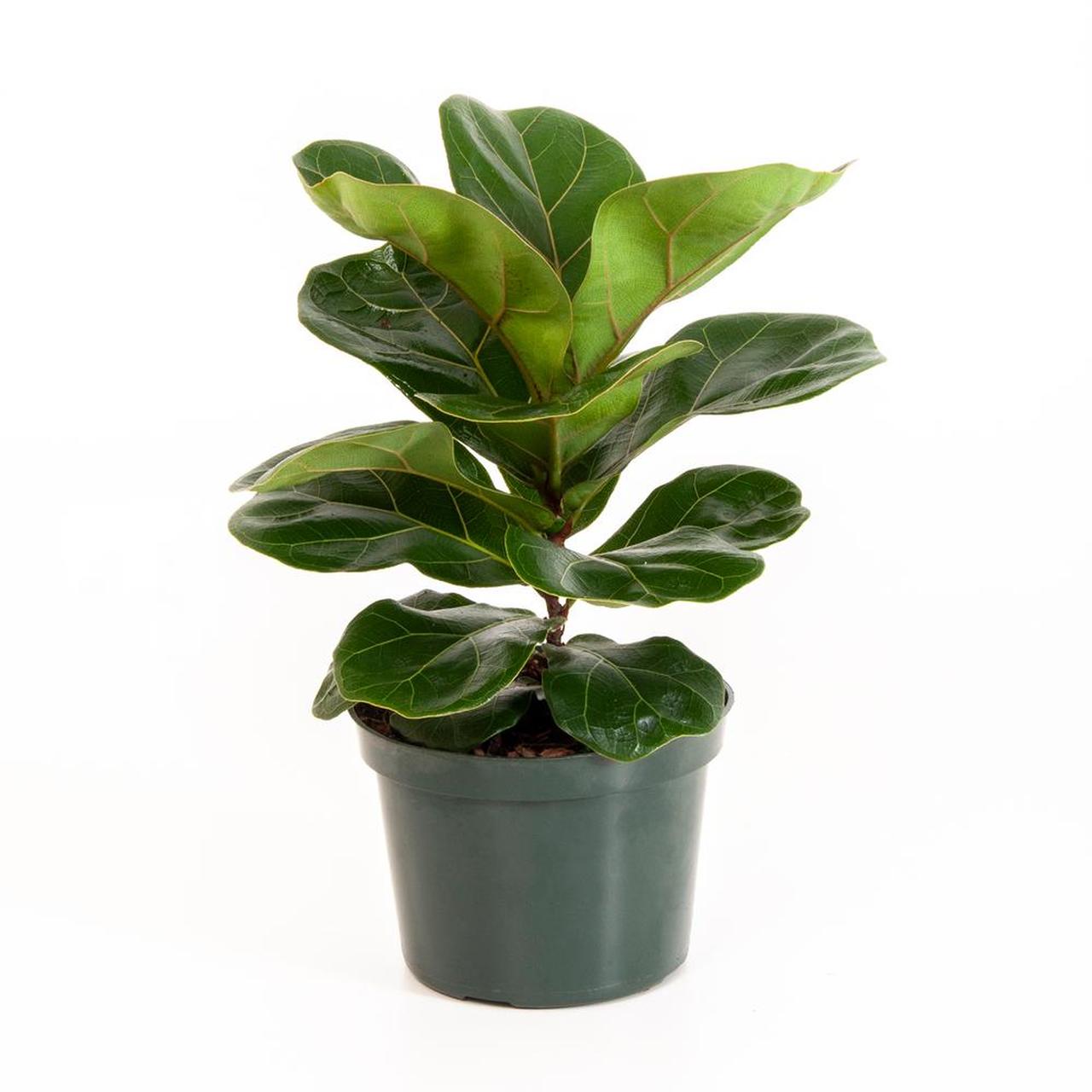
Recently, this once rare variety has become surprisingly popular. Growing Lyrata as well as Elastica – leaf by leaf, forming a tall trunk without branches. It starts branching only after 4 years or as a result of pruning.
It differs primarily in its large (up to 50 cm!) Unusual leaves expanding towards the ends. Light streaks are clearly visible on leaves with a wavy edge.
The common Ficus Lyrata is a large plant that calmly reaches 2-3 m in height. But in indoor conditions, you can grow its miniature species – Compact, Bambino.
4. Ficus Binnendijkii
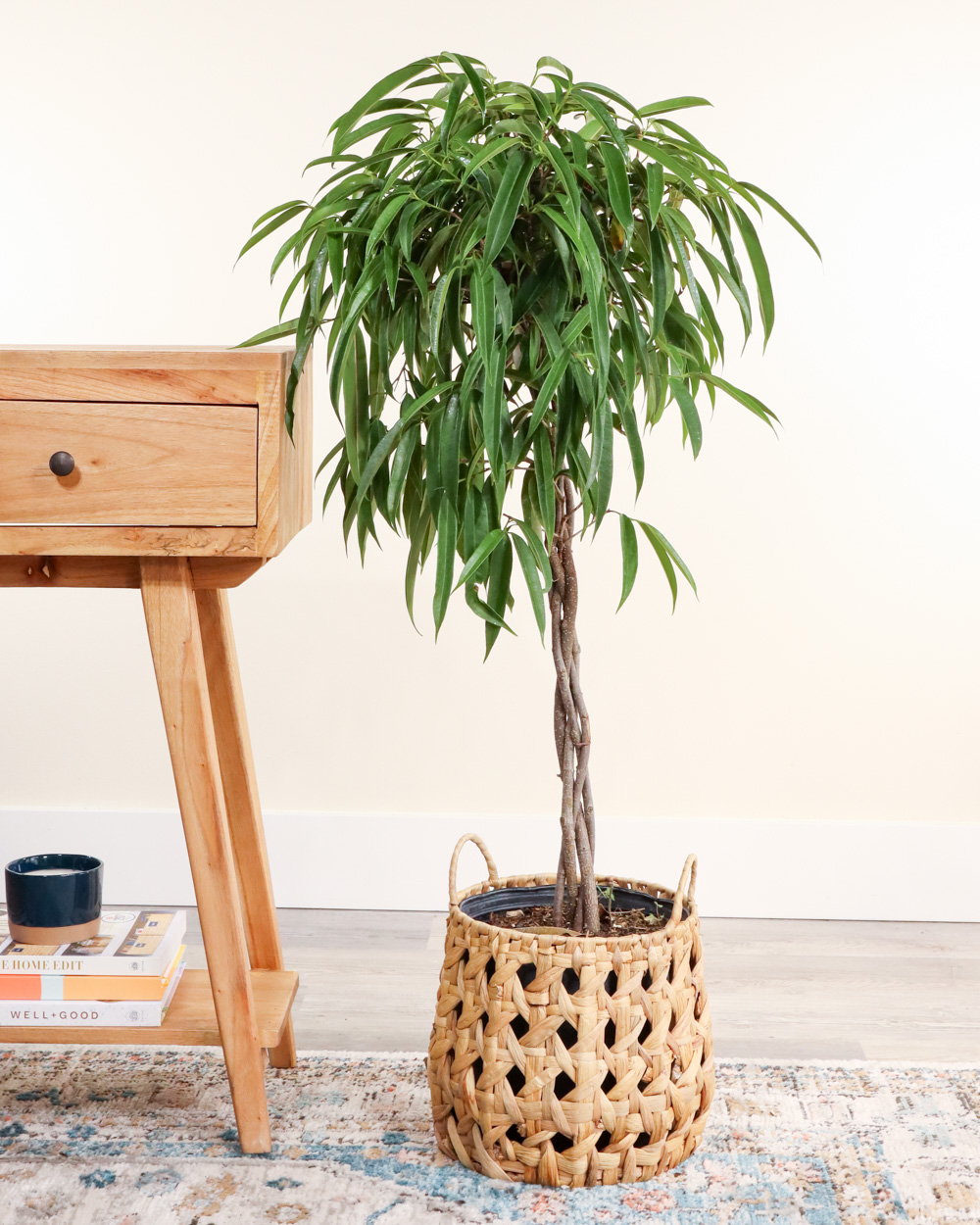
Another variety that is easy to recognize by its appearance is thin (up to 40 mm) long (25-30 cm) leaves, aerial roots, light trunk. Due to the unusual foliage is sometimes confused with Nolina, but the ficus has a thin trunk. The crown is often dark green (Ali, Amstel King), but variegated varieties (Amstel Gold) are also found.
The Benedict variety does not like bright sun, prefers to grow in partial shade. Water it only after the top layer dries – this way, you will never flood the plant or damage it.
5. Ficus Pumila
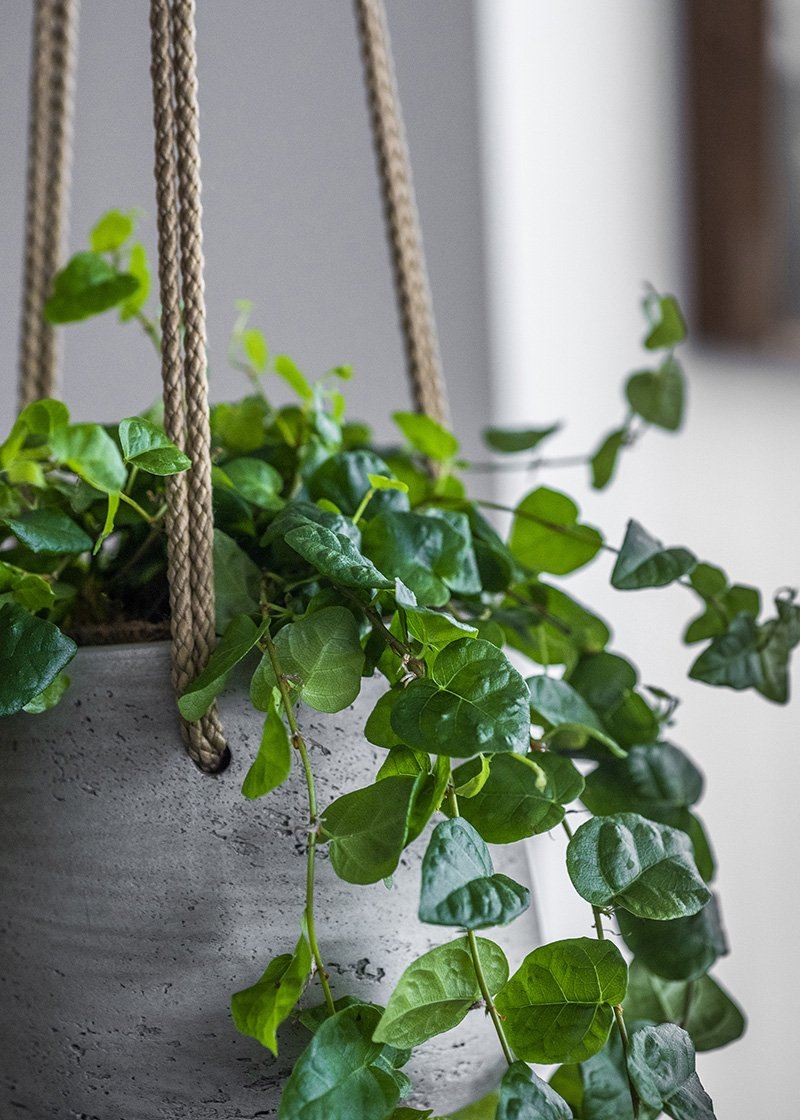
We have already examined large-leaved and small-leaved trees. It’s time to get acquainted with an extremely unusual variety of Pumila. This dwarf ground cover flower pulls branches down rather than pulling up.
Another difference is the love of the sun, and it can grow even on the east or south side under direct rays. He loves water no less – you should not be afraid to pour the Pumila. The drying out of the earthen coma is destructive for him.
The leaves are round and thin. Almost all species are variegated (Sunny, Dort). Propagated by shoots.
6. Ficus benghalensis
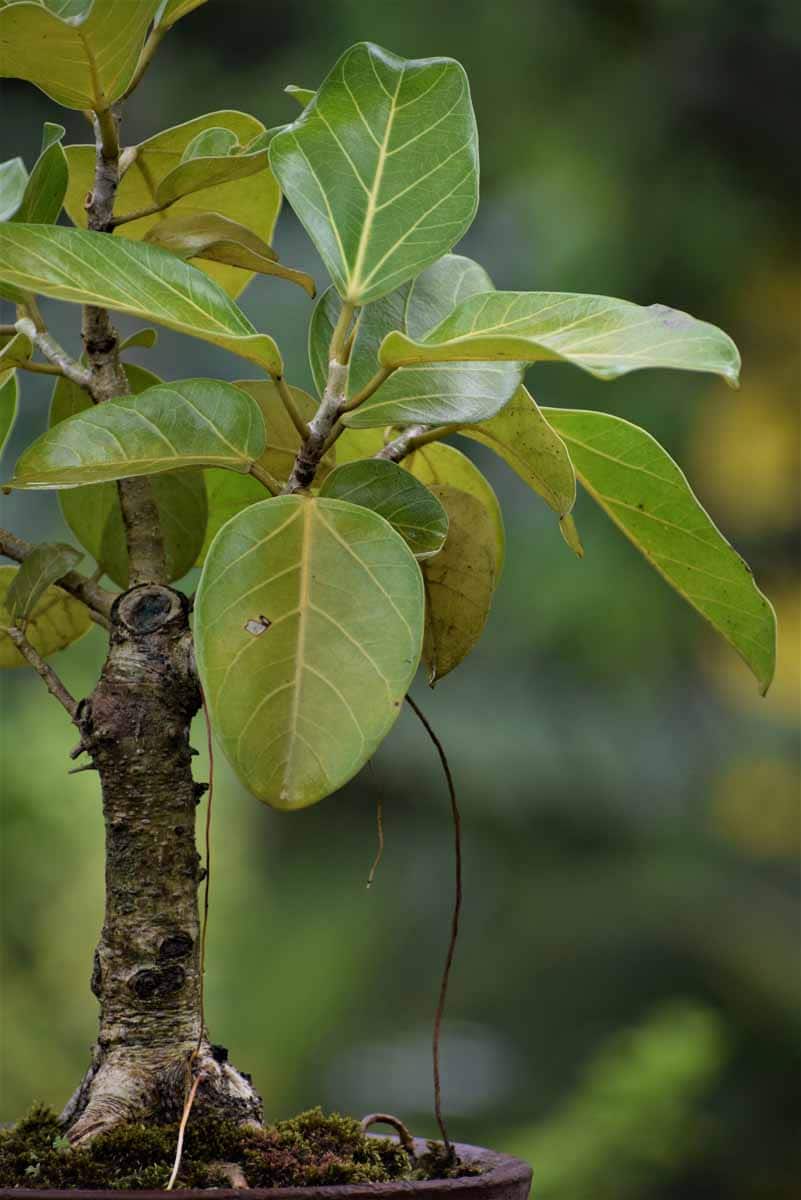
The second name of the variety – banyan – comes from an unusual life in the wild. The tree forms aerial roots, which, going down, take root, and over time – woody and turn into additional trunks. Thus, the tree can “step” to the side, expanding the diameter of its crown and forming a whole grove of one single plant.
Indoor f. benghalensis is not so large – 2-3 m. Outwardly it resembles a rubber-bearing and a lyrate at the same time.
7. Ficus Triangularis
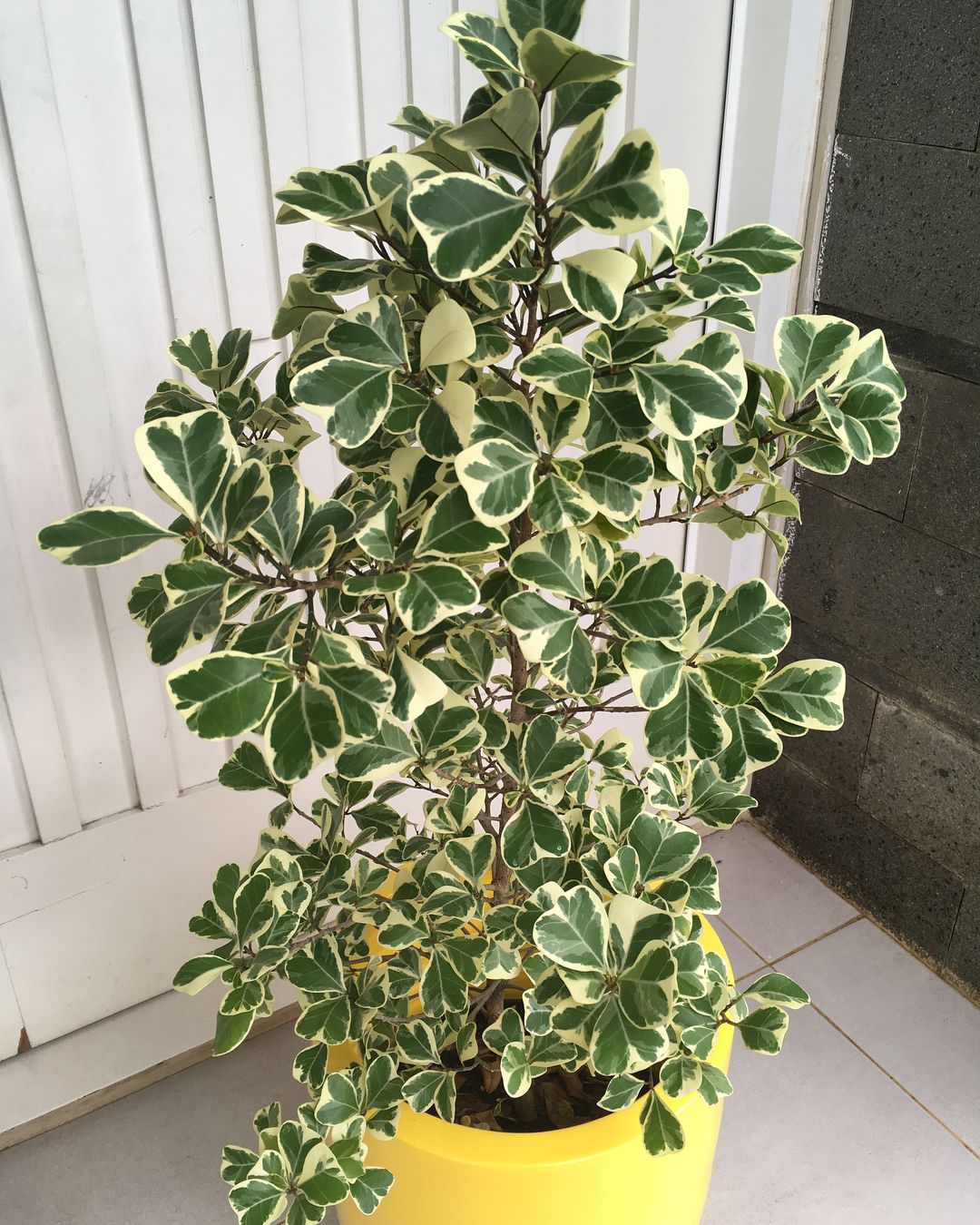
It got its name from the shape of the leaves – narrow at the trunk, wide at the edge. The leaves are dense, leathery, reaching a length of 5-6 cm. To make the leaves look decorative, the plant needs high humidity – put a moisturizer next to it or spray at least once a day.
When grown in a pot, flower sizes rarely exceed 1 meter in height. The color of Triangularis depends on the variety – the crown is monochromatic green or variegated – with yellow spots.
8. Ficus Ginseng
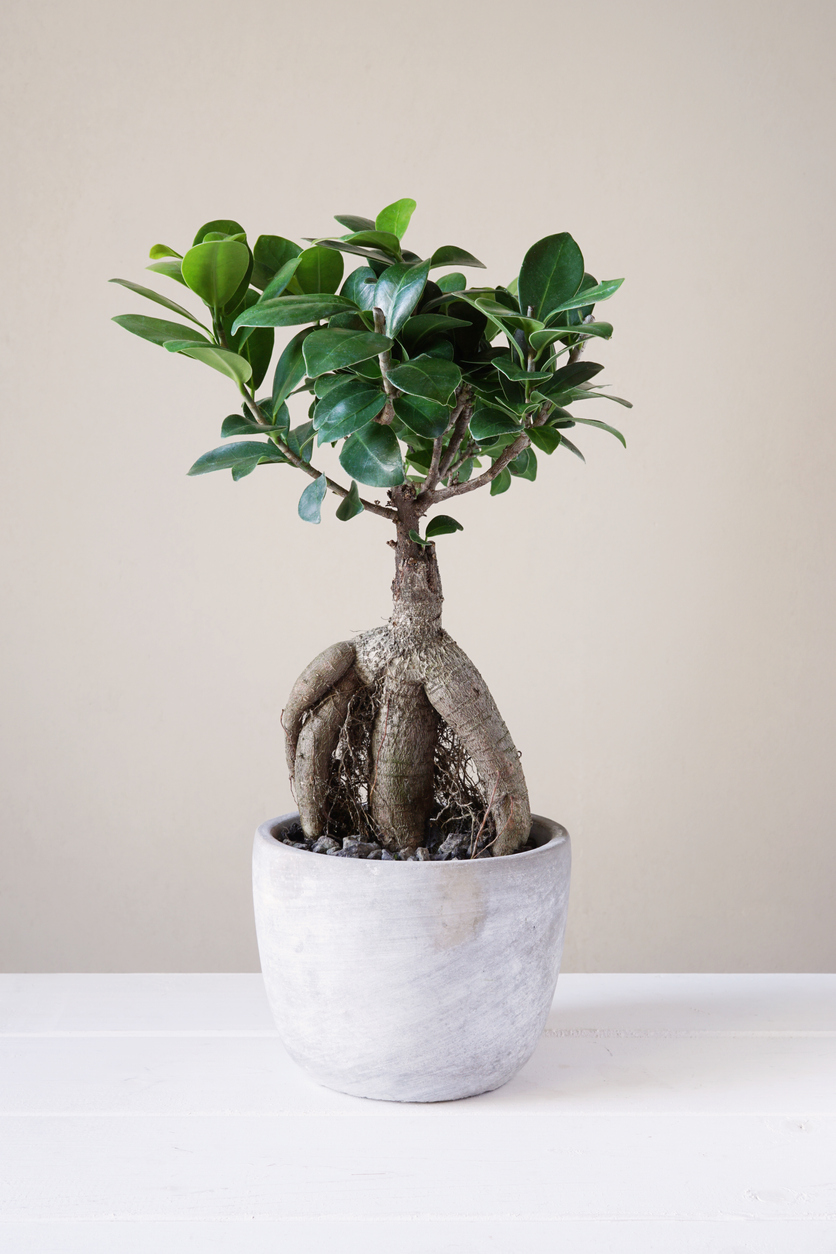
Perhaps one of the most decorative species is ginseng. For flower lovers, it has the “underground” name of bonsai. The bizarre crooked trunk resembles this variant of plant formation. The lower part of the stem is bare. From above, there is a dense crown of dense, glossy leaves.
For successful cultivation of ginseng requires a semi-shaded area without drafts. If the flower blows out, it can throw off all the leaves and lose its decorative effect.
9. Ficus Retusa
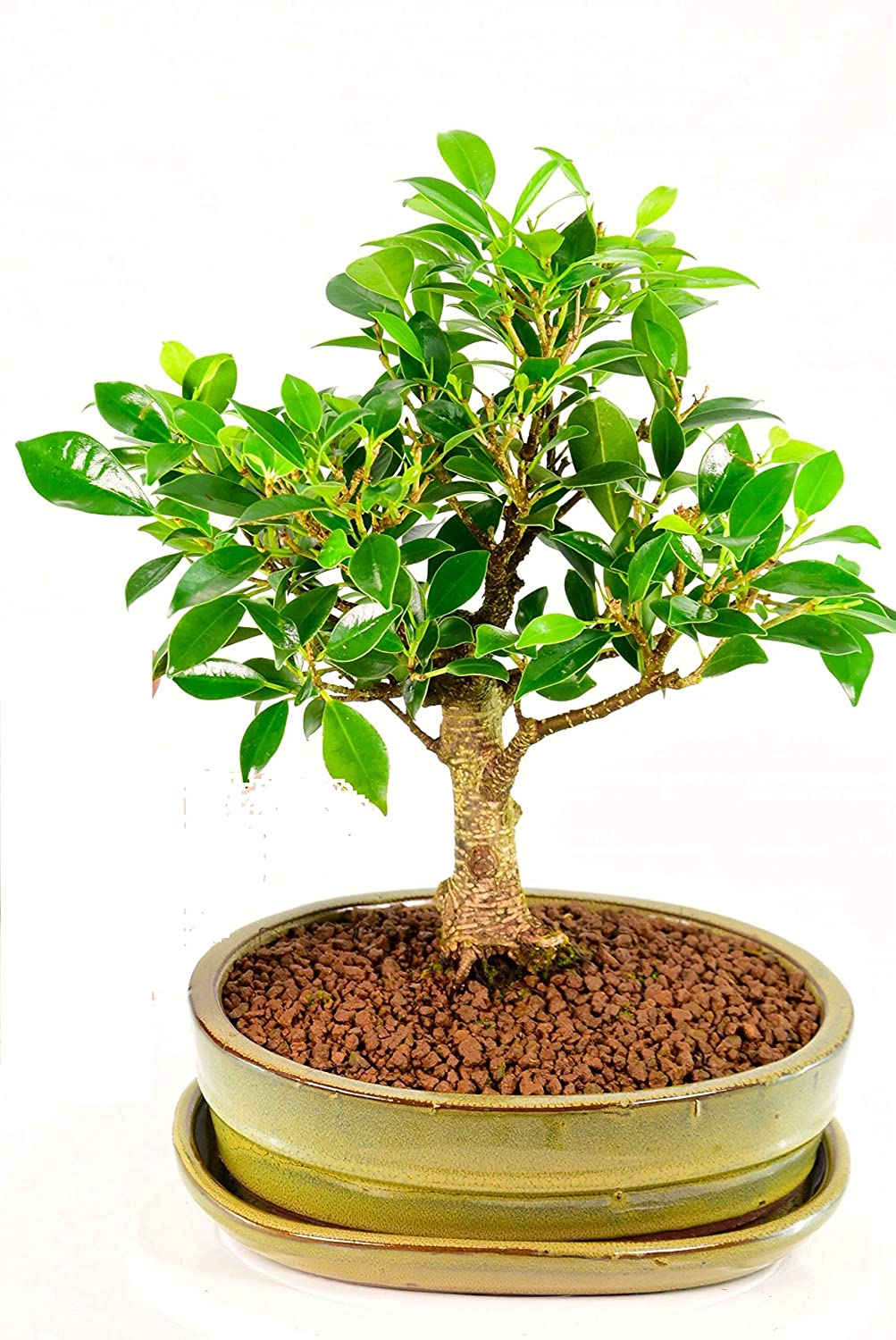
Another “natural bonsai” that resembles the previous variety. But unlike ginseng with almost round leaves, Retusa leaves are thinner, pointed (shaped like Benjamin’s foliage). But the trunk is the same non-standard – thick, curved, beautiful in its own way.
The flower is grown in well-lit places, and it requires frequent watering and, if possible, spraying or maintaining high humidity.
10. Ficus Aspera
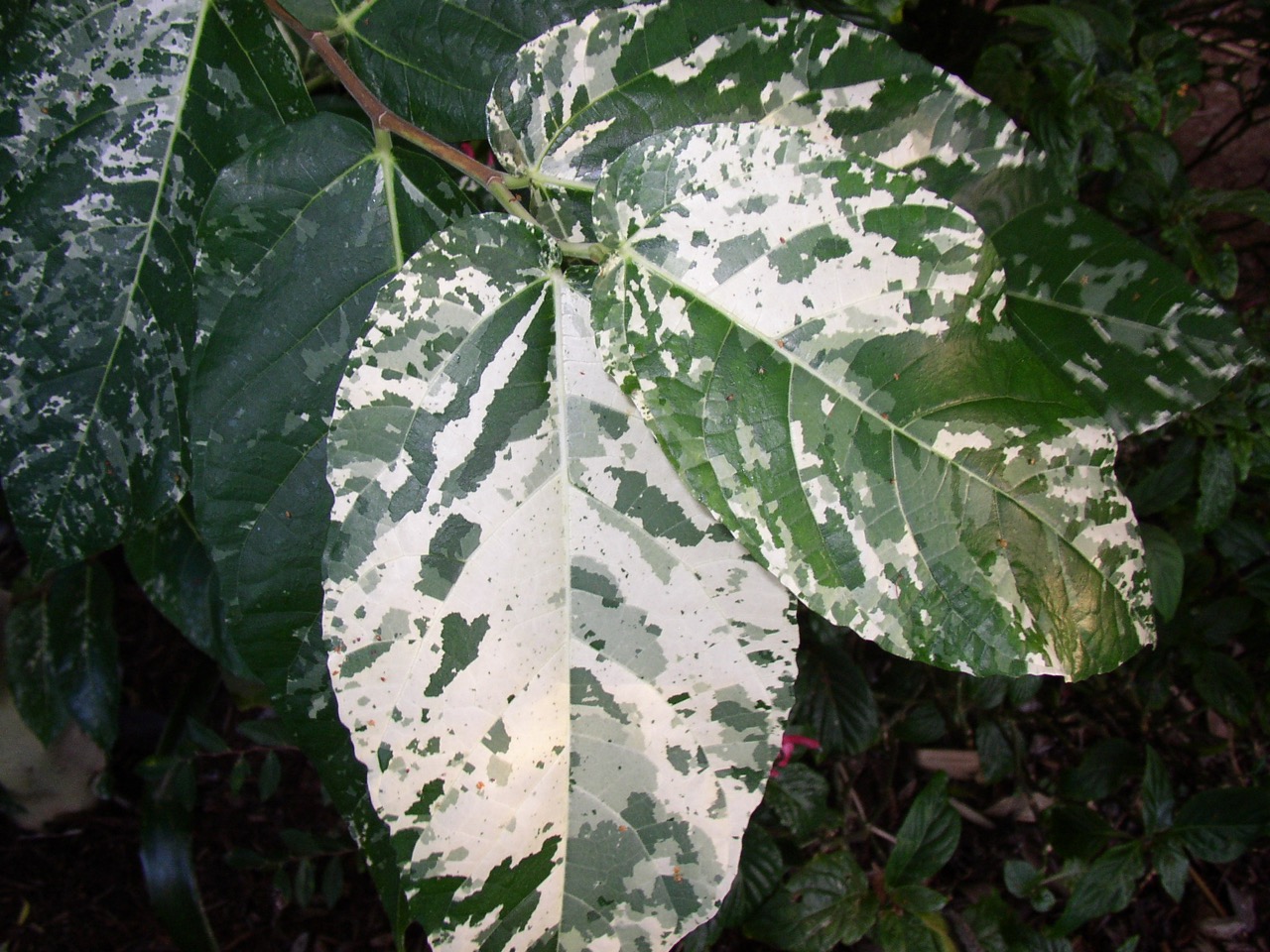
This variety is considered to be very rare, and real connoisseurs of ficuses are specifically looking for it for their collections. But love for Aspera not only for its inaccessibility but also for its beauty: tough green leaves seem to be splattered with white paint. A pot with such a flower will decorate any living room or greenhouse.
The species is very fond of heat, so you need to protect it from drafts and hypothermia, and direct sunlight (burns will appear)—no need to spare the water: water and spray more often.
11. Ficus carica

One of the few varieties with edible fruits. The second name of the species is known to everyone – figs! Indeed, “figs” grow on the stems of the ficus – delicious fruits that you can eat.
In appearance, Carica resembles a tall tree on a thin trunk with a lush crown. The leaves are large, and the shape is broad-lobed, palmate-incised (similar to grape leaves). Unlike its brethren, the Carica is not so thermophilic – it does not tolerate heat well. It grows best at temperatures up to 20 degrees. It is also better to protect it from direct sunlight.
12. Ficus Deltoidea
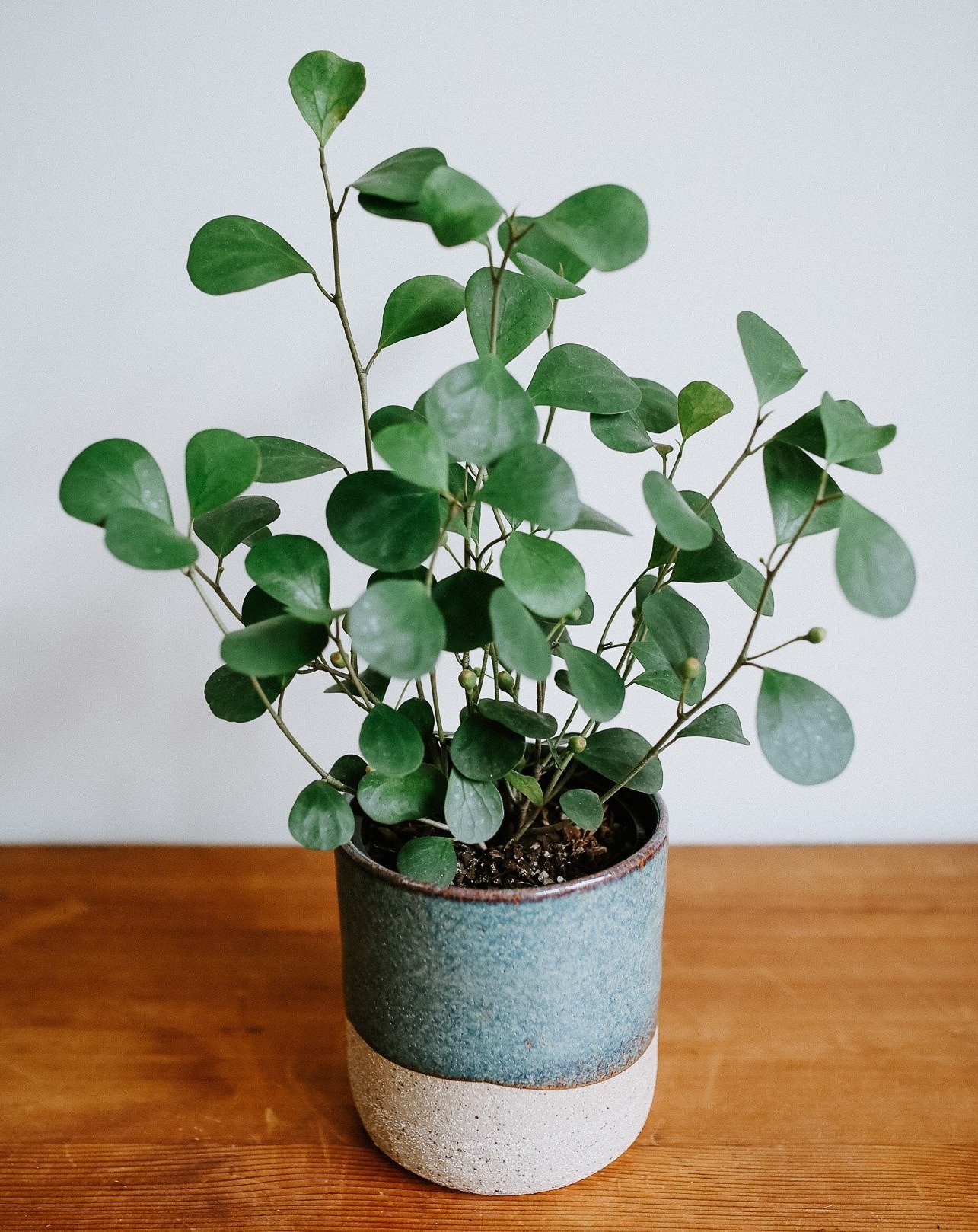
The name contains a description of the appearance: leaves in soft triangles resemble the spelling of the letter “delta.” Plates are medium-sized (5-8 cm in length and width), dense. Most often monochromatic, but variegated subspecies are also found. On the branches of a young Deltoidea, you can see small fruits – they are inedible but give the plant a special recognizable appearance.
13. Ficus Religiosa
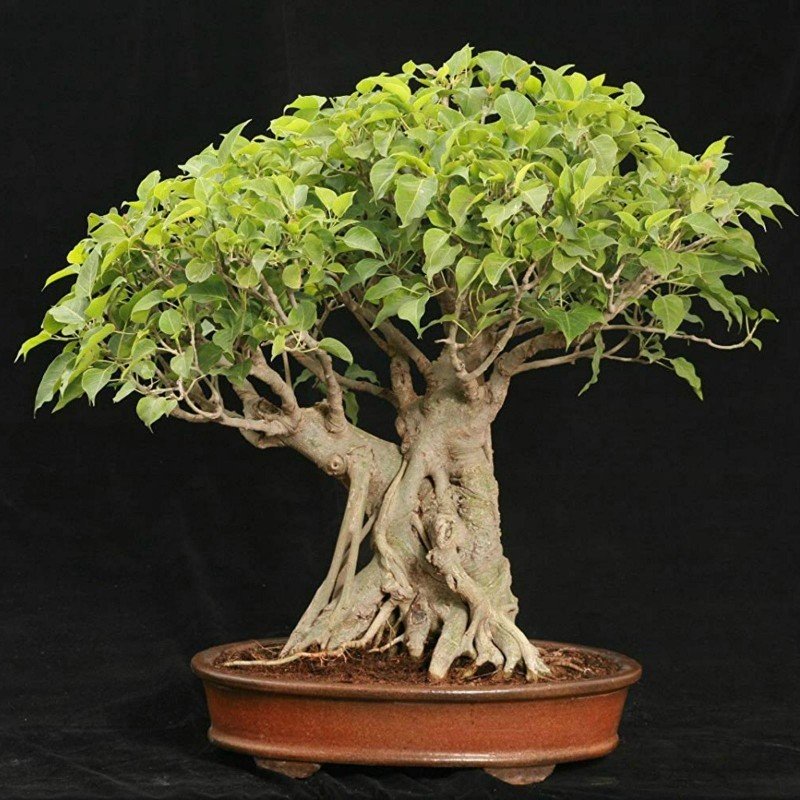
The third bonsai on the list, which grows in the wild like a banyan tree. However, it is distinguished by its small size and a decorative trunk of an unusual shape in indoor conditions. The leaves are triangular, with elongated tips. Although, the color is green. Light yellow streaks are clearly visible.
Unpretentious Religiosa is undemanding to soil, will grow well at temperatures above 15 degrees, and regular watering.
14. Ficus Rubiginosa
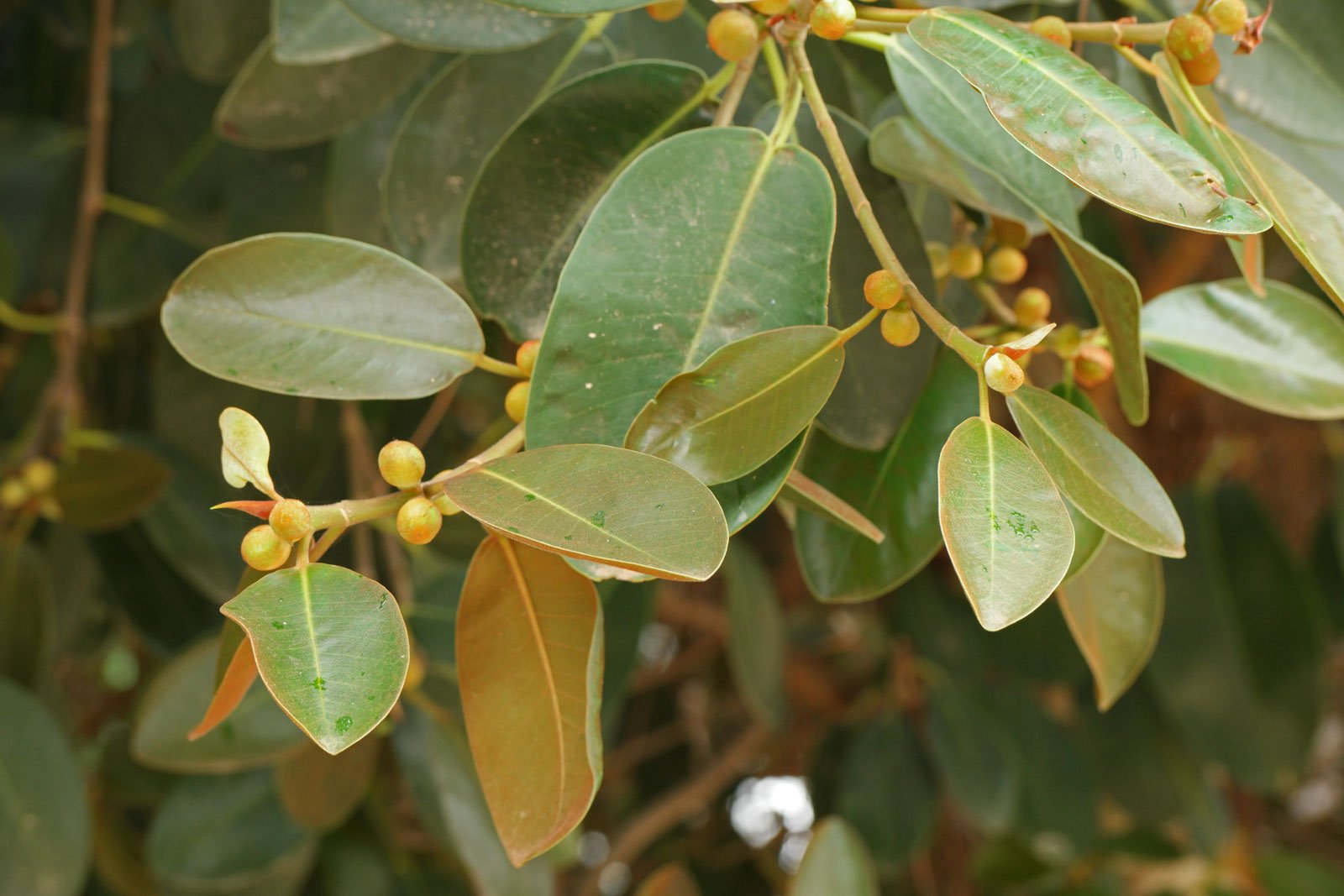
In appearance, Rubiginosa is easy to confuse with variegated rubbery, but rusty ficus is smaller and shorter leaves. Although the color is variegated, the cores and tips of the leaf are burgundies. The variety is more lush, bushy.
It grows well in well-lit places, in conditions of constant high humidity. It would help if you understood that the lighter the place of growth, the more decorative the flower leaves would be.
15. Ficus Petiolaris
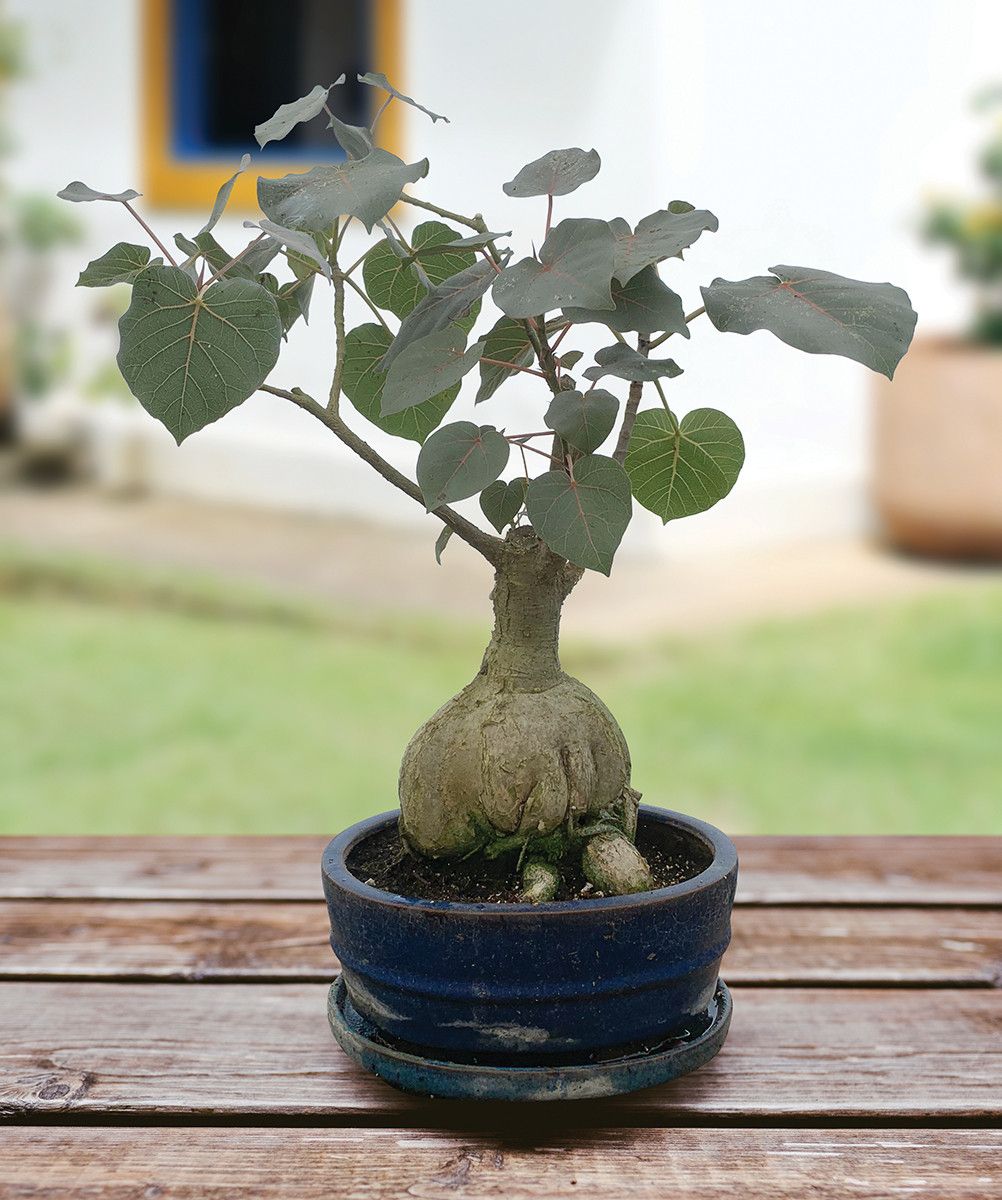
An amazing variety can look completely different: in arid regions, it expands the lower part of the trunk to store life-giving moisture. When wet, it is a tree with a thin, elongated leg. Combines both options into one – dark green heart-shaped leaf plates with red veins.
When growing in homes and apartments, please note that Petiolaris does not like drafts, direct exposure to ultraviolet radiation, and dry air. In addition, the flower sheds its leaves for the winter – this does not need to be scared. In the spring, the sedentary ficus will grow again.






